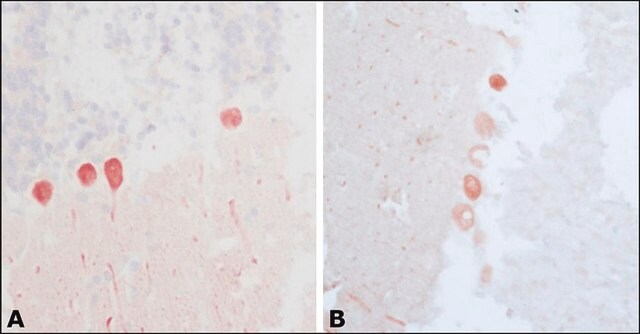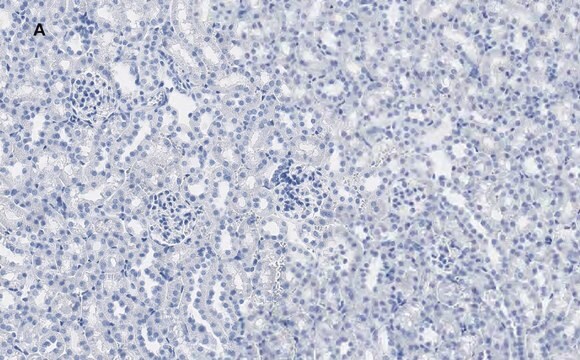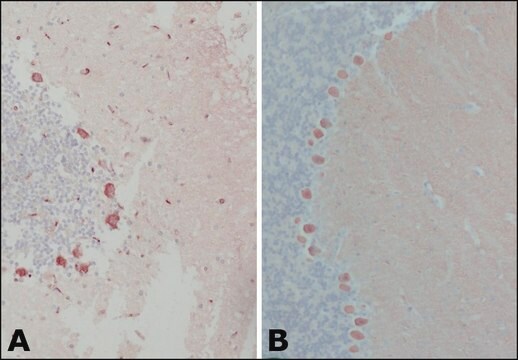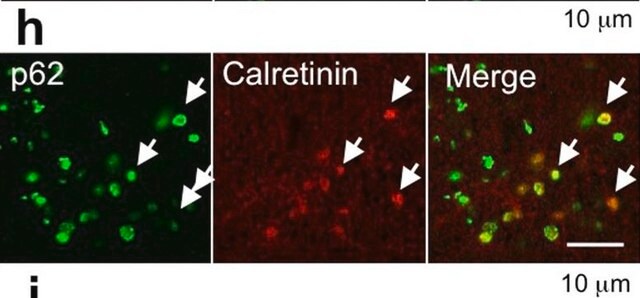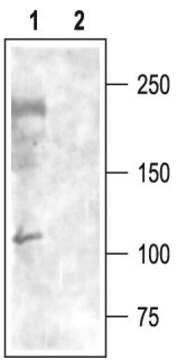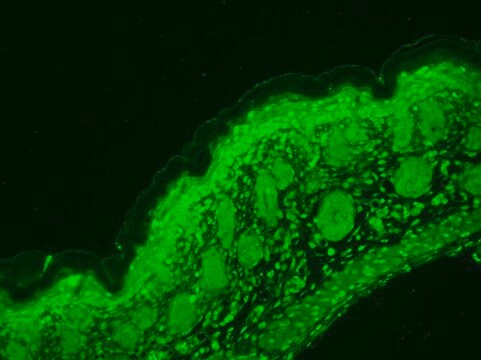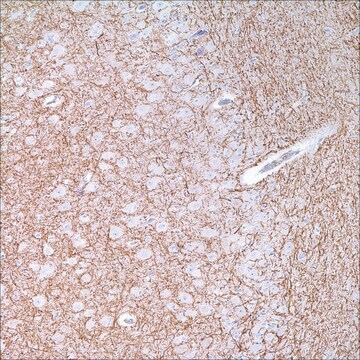C9848
Monoclonal Anti-Calbindin-D-28K antibody produced in mouse

clone CB-955, ascites fluid
Synonym(s):
Calbindin Antibody, Calbindin Antibody - Monoclonal Anti-Calbindin-D-28K antibody produced in mouse
About This Item
Recommended Products
biological source
mouse
Quality Level
conjugate
unconjugated
antibody form
ascites fluid
antibody product type
primary antibodies
clone
CB-955, monoclonal
mol wt
antigen 28 kDa
contains
15 mM sodium azide
species reactivity
mouse, human, guinea pig, canine, sheep, rat, pig, rabbit, feline, bovine, goat
enhanced validation
independent
Learn more about Antibody Enhanced Validation
concentration
15-55 mg/mL
technique(s)
immunohistochemistry (formalin-fixed, paraffin-embedded sections): 1:3,000 using rat cerebellum sections
indirect ELISA: suitable
western blot: 1:3,000 using MDBK cell extract
isotype
IgG1
UniProt accession no.
shipped in
dry ice
storage temp.
−20°C
target post-translational modification
unmodified
Gene Information
human ... CALB1(793)
mouse ... Calb1(12307)
rat ... Calb1(83839)
General description
Monoclonal Anti-Calbindin-D-28K (mouse IgG1 isotype) is derived from the CB-955 hybridoma produced by the fusion of mouse myeloma cells and splenocytes from BALB/c mice immunized with a purified bovine kidney calbindin-D-28K. The isotype is determined by a double diffusion immunoassay using Mouse Monoclonal Antibody Isotyping Reagents, Catalog Number ISO2.
Calbindin-D-28K belongs, together with calmodulin, S-100, parvalbumin, troponin C and other proteins, to a family of low molecular weight calcium-binding proteins (CaBPs). These CaBPs have homologous primary structures, which contain polypeptide folds of the EF-hand type for the acceptance of Ca2+. Calbindin is an attractive neuroanatomical marker. Despite its broad tissue distribution, calbindin-D-28K exhibits a cell-type specific expression pattern. Thus, it has been immunocytochemically localized in selected cells in many CNS structures, where it is thought to act either as an intracellular calcium buffer, or in the intramembranous transport of calcium. It is found predominantly in subpopulations of central and peripheral nervous system neurons, and in certain epithelial cells involved in Ca2+ transport such as distal tubular cells and cortical collecting tubules of the kidney, and in enteric neuroendocrine cells. Monoclonal antibody reacting specifically with calbindin-D-28K is instrumental in the localization of calbindin in different tissues and cell populations.
Specificity
Immunogen
Application
Biochem/physiol Actions
Physical form
Storage and Stability
Disclaimer
Not finding the right product?
Try our Product Selector Tool.
recommended
Storage Class Code
10 - Combustible liquids
WGK
WGK 1
Certificates of Analysis (COA)
Search for Certificates of Analysis (COA) by entering the products Lot/Batch Number. Lot and Batch Numbers can be found on a product’s label following the words ‘Lot’ or ‘Batch’.
Already Own This Product?
Find documentation for the products that you have recently purchased in the Document Library.
Customers Also Viewed
Our team of scientists has experience in all areas of research including Life Science, Material Science, Chemical Synthesis, Chromatography, Analytical and many others.
Contact Technical Service